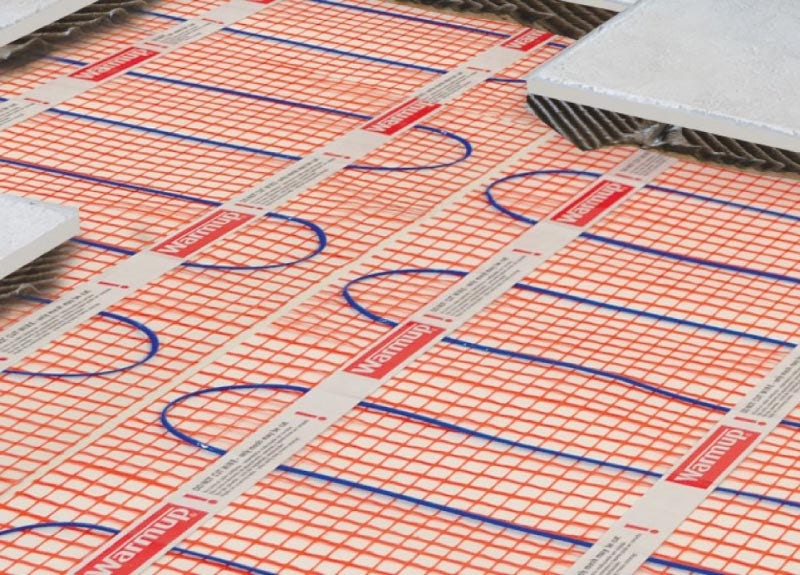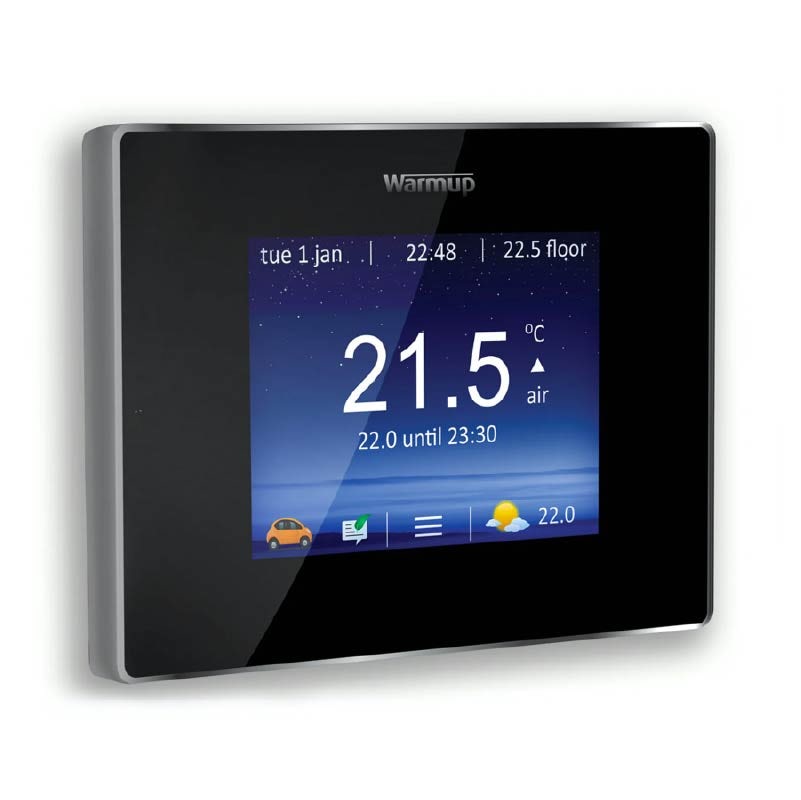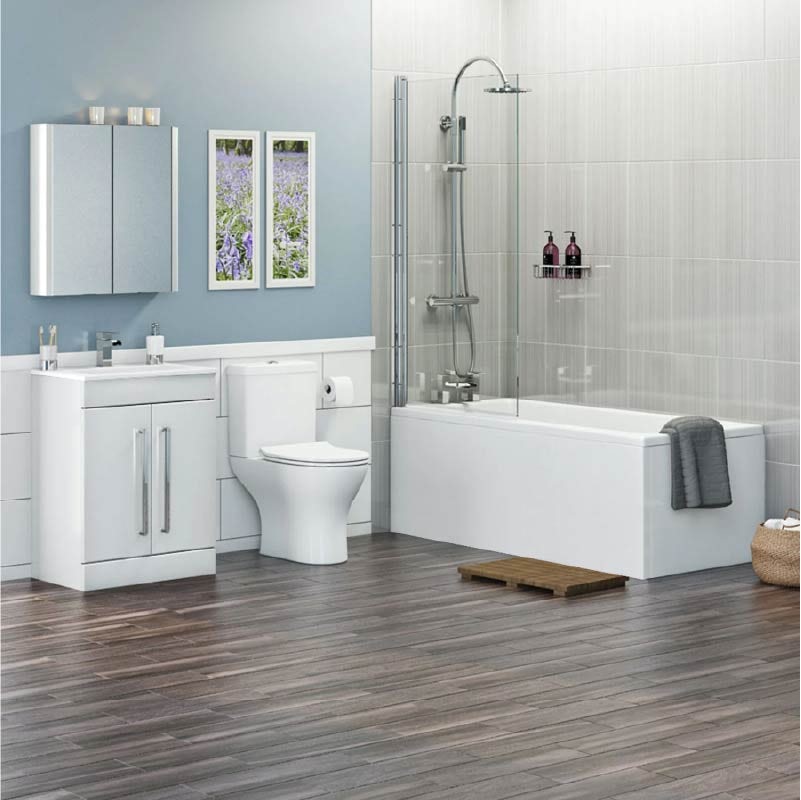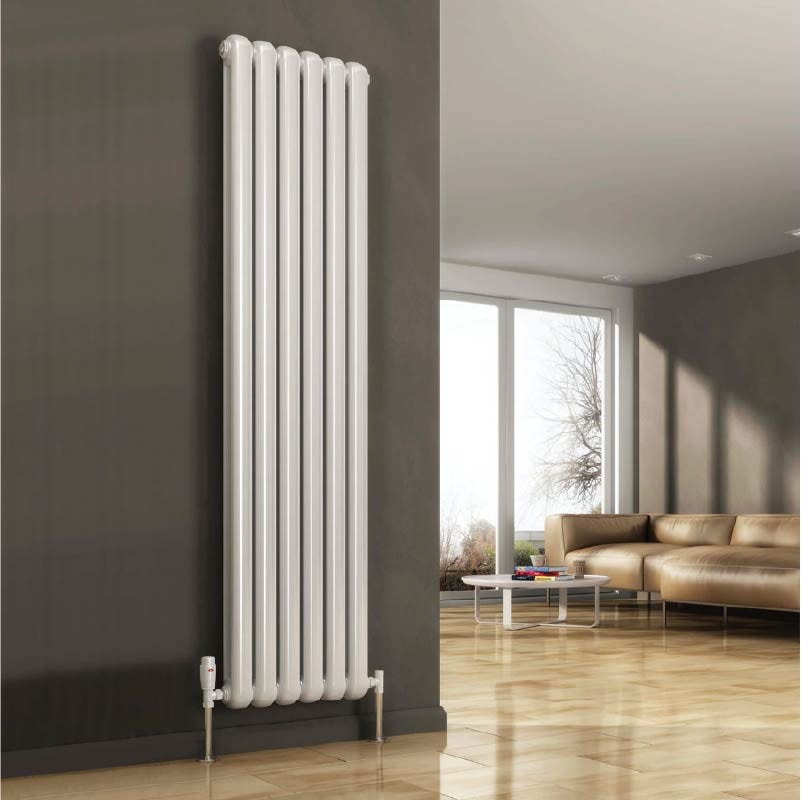We’ve all heard the rumours, but can swapping your radiators for underfloor heating really save you money in the long run? We investigate…
Even if you live in the lap of luxury, your heating may not be as efficient as it could be. In fact, many people are oblivious to the fact that they are literally burning money; spending excessively on heating, where they needn't be.
The following factors can play a role in this:
- Higher-than-average energy prices in certain UK regions
- Under-occupied homes (for example, a couple living in an 800 square metre house)
- Poor energy systems in place (for example, an outdated heating system or inadequate insulation)
Did you know that nearly 10% of the UK's households live in fuel poverty? Even if you don't quite meet the criteria for this classification, searching for more energy-efficient heating methods will never hurt your household.
Consider the concept of underfloor heating (or UFH as we may refer to it in this article) in all its glory. Here, we'll cover what it is and its benefits, including how it'll save you hundreds of pounds each year. To be as thorough as possible, we'll also review some potential cons and explain why they're negligible.
How do underfloor heating systems work?
The easiest to understand definition of underfloor heating is as follows: it's a radiant heating source that distributes heat evenly throughout a room.
If you currently use a radiator to keep your UK home warm, you may be disappointed by its heat distribution. Radiators often leave cold spots and take much longer to heat an entire room.
Homeowners with underfloor heating systems won't run into these issues. These systems run at much lower temperatures, but they still manage to achieve higher comfort levels than radiators.
They warm a room from the ground up, meaning the heat will impact you and your family more directly. Because of the way they emit and distribute heat, they promote energy efficiency.
Where to install it
Some homeowners prefer to install an under-floor heating system for increased energy efficiency in just one room. Others prefer to make it a whole house project to significantly lower their heating bill in the long run.
The bathroom tends to be the most popular spot for this kind of system, followed closely by the kitchen. However, you can also install it in a bedroom, living room or common area.
How long should I keep my system running in the winter?
During the winter months, you can keep your system running continuously. When you're living in below freezing conditions, your system will take some time to warm up. Constantly turning it on and off will result in unnecessary heat loss. And, your family members may be chattering their teeth and trying (and failing) to find refuge under thick cotton blankets. While the energy costs will be slightly higher, you and your household will reap its benefits more fully.
Now, when the seasons change and it starts to warm up outside, you won't need to keep your underfloor heating system running all the time.
A great heating solution for renovators and property builders
No matter if you want to update your current home or are building a new one, you can save on your energy bills with underfloor heating.
To experience the lowest upfront bills, you will need to choose the right system based on your situation. Electric systems are best for current homeowners, while water systems are ideal if you're building a home from scratch. Read on to explore the difference between these systems and how they increase the temperature of your home.
Water vs. electric underfloor heating systems
There are 2 types of underfloor heating systems, and each has its benefits and drawbacks. Before you decide which one to implement, you can read more about the different types of underfloor heating below:
Electric underfloor heating
Electric systems are usually easier to install and require more economical materials. People most commonly opt for this type for smaller spaces or retrofit building projects.
There isn't just one way to install electric components under a home's floor. Installers can use:
- Underfloor Heating Mats. These mats are great to install under marble, tile, or stone. They retain heat well and are affordable options for increasing the temperature of square-shaped rooms with no irregular corners.
- Loose Cable Fittings. Loose cable fittings are ideal for a large or oddly-shaped room. They can fit around heavy appliances or irregularly-shaped corners.
- Underfloor Foil Film. This method is most practical for laminate, parquet, and wooden floors. Installers typically place foil film on top of a layer of chipboard or concrete to ensure the system's longevity.
Water underfloor heating
Water systems are less common among the two UFH categories, but they're still incredibly efficient.
A water-based system uses underfloor heating pipes. These pipes connect to either a heat pump or boiler. The heat pump or boiler warms water that flows through the pipes located directly under a home's floors. When heated, the pipes work to raise the temperature of a room.
Heat pumps are most practical for water underfloor heating, but some homeowners opt for boilers because they meet higher heat demands more efficiently.
Underfloor heating costs
Underfloor heating costs will vary depending on factors like:
- The age of your building (e.g. a Victorian home will differ significantly to a new build)
- The size of the rooms in your home
- The specific system you choose
The cost per square metre for each material type will vary drastically. Pipes for water UFH may cost around £40 per square metre, while electric mats may only cost around £20 per square metre.
You'll have to account for both material bills and the cost of labour. The total underfloor heating cost for each specific system could be as follows:
- A renovated electric system: £4,250
- A new-build electric system: £2,450
- A renovated water system: £10,500
- A new-build water system: £6,500
To account for your home's rooms and unique circumstances, contact an expert to discuss the cost of UFH installation.
What are the running costs after installation?
After installation, your underfloor heating system won't operate for free. Depending on your room's size and how long you leave the system running for, it may cost you between £7 and £15 per month.
With a UFH system in multiple rooms in your house, you may qualify for a UK government scheme known as the Renewable Heat Incentive (RHI). You'll have to apply, but you may be eligible to receive cash payments when you ditch your traditional central heating system. You can use this incentive to offset some of the running costs you'll have.
Check out our in-depth guide to underfloor heating costs.
Maximise your savings after you get underfloor heating for your property
Wondering how to maximise your savings once you get new underfloor heating for your home? Check out these 3 tips:
Tip 1. Get other energy-efficient features for your property
If you don't already have energy-saving features like double-glazed windows and efficient insulation, invest in them. These insulation features will help lock-in the heat that your new underfloor heating system produces, leading to decreased wastes of money and energy.
Tip 2. Take advantage of the thermostat settings
One of the easiest ways to make the most of your new underfloor heating system is to familiarise yourself with the thermostat. Many underfloor heating systems come with customisable thermostats. You can schedule a heating temperature (or multiple temperatures) and times to fit your daily routine.
For example, you can set the entire system to turn off for a week while you're on vacation. Or, you can tell it to start turning on when you anticipate arriving home. You and your family will never have to walk into an icebox ever again!
Tip 3. Shop around for electricity suppliers
To truly maximise your savings and lower your energy bills, shop around for the right UK electricity supply source. You may be surprised to find that you've been overpaying. Send an email to your current supplier to negotiate your rate or get quotes from new ones.
What are the benefits of an underfloor heating system?
Explore the specific benefits of an underfloor heating system below:
It lowers your heating bills
Underfloor heating is an energy-efficient heating method for your home. You'll reduce your family's energy consumption and lower your running costs in the long term.
It blends in
UFH isn't all about lowering your heating cost. It's also great for aesthetics. It doesn't clash with your existing décor, as it all lies underneath your floor coverings.
It works with any floor type
Underfloor heating lowers your energy costs no matter the flooring you have. It works well with carpet, tile, wood, or stone flooring, so you won't have to do a complete flooring remodel. Your floor finish also won't affect the system's efficiency.
It improves your the cleanliness of your home
This benefit may have you scratching your head at first. However, an underfloor heating system will make a room in your home more hygienic.
A higher floor temperature means that dust mites and other creepy crawlers won't be able to live and multiply. You'll save money on your exterminator service or DIY home treatments.
It improves comfort
An electric or water system will let you and your family comfortably walk around barefoot in any room, even amid a cold January day.
When you combine UFH with other insulation features like double-glazed windows, you will experience optimal comfort.
It gives you space design freedom
Some UFH options offer great space design freedom in any room. You can install it in irregularly-shaped rooms or around heavy appliances with no issues. UFH also works well if you have a small floor space.
Underfloor heating vs radiators
Have you grown content with how your current radiators offer heat to your home? That's great! As we all know, modern radiators come in a range of stylish designs to complement and enhance your interiors.
However, if you feel that a different solution is just the ticket, you should consider the potential downsides too.
- They can present safety hazards (radiators are hot to the touch)
- Stick out as eyesores among your home's furniture
- Operate noisily
- Operate with no regard for efficient energy usage
- Decrease oxygen levels as they run
For a discreet way to comfortably heat your home and lower your energy bills, it may be worth replacing your home's radiators with UFH solutions.
When to NOT use UFH
Most homeowners will benefit from underfloor heating regardless of their circumstances. However, your home may not benefit if it has exceptionally high ceilings. Other than that caveat, underfloor heating is a sound option for any UK home.
What are the potential cons of under floor heating?
There are three potential cons of underfloor heating. However, you shouldn't let these deter you. Below, you can read about the lurking cons of underfloor heating and why they don't matter in the grand scheme of things:
The floor height issue
As a homeowner, you've likely grown used to your home's fixed ceiling and floor heights. Some people are discouraged by the concept of underfloor heating, as its installation involves raising the floor build-up.
However, when you enlist the right company for the job, you will only need to raise your floor build-up between 3 and 6mm for electric systems. Water-based systems demand around 16mm, but this amount is still quite minimal.
Installation costs
Some homeowners are intimidated by the installation costs. Do you have some savings set aside for a new family TV or workout equipment? Consider putting this money toward the cost of an underfloor heating system. It's quite an affordable investment, especially when you consider your long-term energy savings.
Installation time
Some homeowners want a new energy system as soon as possible. Installing underfloor heating typically takes anywhere between one and three days, while installing a radiator is usually a same-day project. However, this time difference isn't a big deal to most people.
Installing underfloor heating to save money long-term
Underfloor heating installation is an arduous task that you should only perform if you feel confident. Especially if you're getting water underfloor heating, you should enlist a professional's help.
Once they're done, you will experience increased comfort, lower energy bills and happier household members. You'll happily wave goodbye to your traditional central heating unit.
More heating advice
You’re bound to have plenty of burning questions about heating your home. And, here at Victoria Plum, we’re happy to provide all the answers. Using our own knowledge and expertise, we’ll help you make the most informed decisions with buying guides for all types of heating, including radiators, heated towel rails and even a guide to underfloor heating.
Wondering which flooring you can use with underfloor heating? Or how much underfloor heating costs to run? Find all the answers and more in our in-depth articles.
Shop underfloor heating
If underfloor heating is the best solution for your home, you’ll find a comprehensive range of products right here at Victoria Plum. From Warmup, the world’s bestselling underfloor heating brand, choose from a huge selection of systems, with their own SafetyNet™ installation guarantee available. Simply click on the image below to begin browsing.









